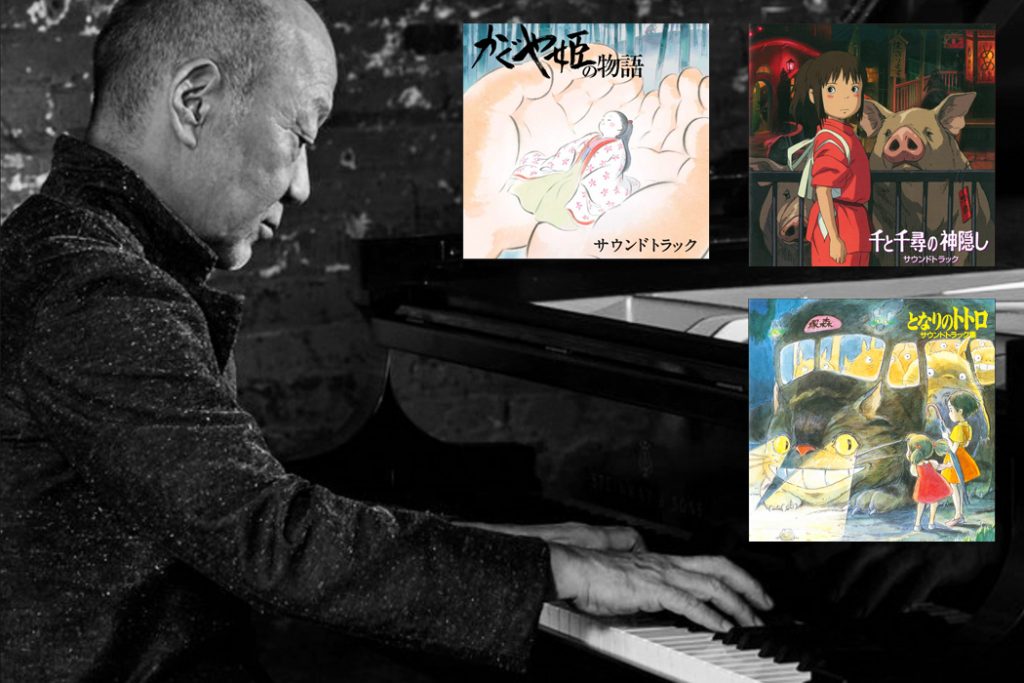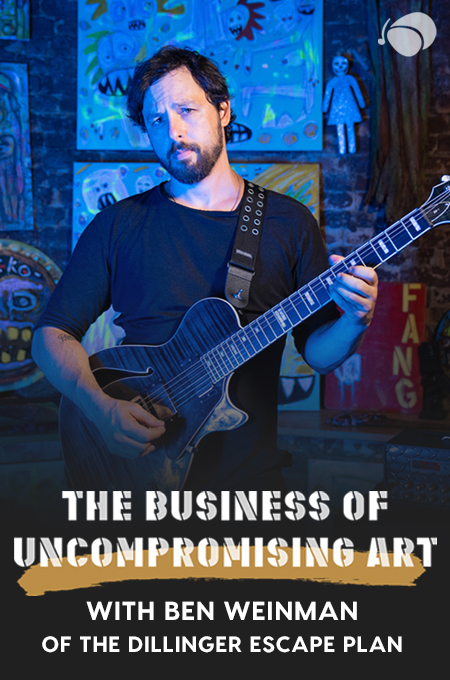+ Take your modern jazz piano and hip-hop beat making to new heights with Soundfly’s new course, Elijah Fox: Impressionist Piano & Production!
As I settle into the music of pianist and composer, Joe Hisaishi, the first thing I notice as a listener is that I am “there.” Or, here. I am here in the car. I’m checking out a new neighborhood. There are feelings of foreboding and uncertainty, but also of excitement. I see the trees; I feel the wind. It’s all here, and so am I.
In Hisaishi’s compositional world, less is more, and no breath or moment goes unnoticed. Before we dive too deeply into all this, I want you to listen to “Evening Wind,” from his soundtrack to My Neighbor Totoro.
The sensations evoked by Hisaishi’s works are deeply familiar. An amalgamation of traditional minimalist, classical, theatrical, and film score music — with deep roots in a uniquely Japanese sensibility — Joe Hisaishi’s sound is simultaneously current and timeless.
When paired with the stories and colorful imagery of the films of Studio Ghibli, championed by director Hiyao Miyazaki, the listener is brought back to sensations of the wonderment of childhood, of coming of age, experiencing simple joy and overcoming adversity — all of which occur simultaneously, taking place within animated films that tap the archetypes contained in fairy tales and Japanese legends.
This video by YouTuber Asher Isbrucker explains how, with many of those elements combined and despite these films being animated (and thus naturally geared towards young adults), Ghibli is able to achieve an “immersive realism” that touches a universal experience we all share. In no small way, Hisaishi’s music plays an important role in that achievement.

In Japanese, the word “ma” translates directly to “emptiness.” This concept is apparent in classical paintings, where the painter makes intentional use of the white or empty space in the painting, and how that empty space is as much a part of the painting as the brush strokes.
In many ways, Hisaishi’s compositions are the musical equivalent of a traditional Japanese painting. The deliberate focus on repetition and space between notes takes you into the world of the music, focusing on place as much as narrative; and thus, landscape over linearity.
It is in these moments of stasis that you can breathe and feel the moment. This much more visual approach to music blends seamlessly into the individual worlds of the Studio Ghibli films to create music with a heartrending, joyful, and redemptive feeling.
In most films, and the music that accompanies them, there is so much drama and suspense that each moment is overly dominated by action and activity. But in the Studio Ghibli films, there are moments where nothing is really happening; it is this focus on nothingness that illuminates the moment and makes it special and timeless.
At the beginning of his composing career, the late 1970s, many pioneers of synthesizer and minimalist genres were active in Japan. Composers intentionally wrote music as background or atmospheric in ways that do not focus directly on the narrative or melody, but rather simply add to the sensation or ambiance of what the listener is doing. Instrumental layers are built on top of one melody that is mostly repeated throughout the piece.
Hisaishi’s first production with the Mkwaju Ensemble held true to such a minimalist aesthetic. Check out the first track “Mkwaju.”
Yet, it was Hisaishi’s musical accompaniment to the films of Studio Ghibli, in which he was able to bring his minimalist music with a pop bend to new horizons. With an affinity for popular, melodic music and the emotive power of narrative storytelling, Hisaishi combines Western and Eastern approaches to composition, seamlessly blending minimalism and also movement, stillness, and voice.
The film music highlights story and place simultaneously, sometimes an emotional moment that is both joyful and heartwrenching. The music brings out in us empathy for these characters, and those feelings inside of us are tapped through the harmony of visuals and sound.
Having studied classical violin at a very young age, he was also an avid film fan. His compositions create the sense of both place and narrative. After watching a Ghibli film, I often sit with his music and revisit those places in my mind: the mountains, the clouds, the cities, and the water. Just like in the Japanese traditional theater form of Kabuki, the music is an integral part of the story.
Also like Tchaikovsky’s The Nutcracker, and other Romantic era ballets and stories set to music, the consistency in the music is not separate from the theatrical drama going on, and changes to follow the drama rather than existing as an independent, linear compositional piece. Melodic themes are repeated, and built on or adapted throughout, both in these Romantic plays as well as in Ghibli’s films, with a variety of different instrumental backdrops.
The effect can sometimes be rather silly, focusing on the humor or absurdity of certain situations (these clumsy moments are always so very relatable!). The goal of the story itself, as well as the music, is often in illuminating self-discovery. So certain narratives which describe characters are built up by other musical voices as the plot line of the film progresses. This concept is called leitmotif, and Hisaishi extrapolates a lot of melodic content from a very minimal set of musical tools.
Take a listen to “The Joy of Living” and “L’il Bamboo,” different variations from the film The Tale of the Princess Kaguya. Listen to how different instrumentation builds upon the flute narrative of the main character’s personality and story arc.
Even antagonists in the Ghibli films are given a very relatable spin (relatively), and Hisaishi captures their characters perfectly in his music. Film music can often be unkind to antagonists, or just incorporate a lot of unnecessary underscore — we don’t want to be able to identify with them — yet here, there’s often something presented with which we can connect to these characters.
In Spirited Away, there is a vast dichotomy between two music tracks, “Kaonashi (No Face)” and “The Sixth Station.” After No Face is driven from the Spirit bathhouse, the main character Sen rides the train with No Face. Here, we’re given a chance to rethink our identification with No Face.
It is a simple and sparse scene, but one in which Sen and No Face share a connection without words — the palpable sadness of the moment. As is a common plot point in the Studio Ghibli films, the antagonist is an integral part of the main character’s growth and development, rather than a force to be destroyed (without remorse).
The emotions captured in Hisaishi’s music bring out this more ambiguous perspective on antagonists, in which they are meant to help teach and grow the protagonist through empathy and understanding. They are part of the overall tapestry of the narrative.
Joe Hisaishi’s music is also relaxing on a physiological level; one could easily fall asleep while listening. Hence why there are so many YouTube compilations of his music meant for relaxing study or work. The sounds Hisaishi incorporates on the synthesizer are soft and watery, mixed with piano and strings. One example of this is “Silent Love,” from A Scene at the Sea, which integrates the ’80s synth pop sound into minimalism.
When I am listening, I notice that I have a particular interest based on a family member with a hearing impairment, of how music is sensed or felt by someone with an impairment in one’s body. Sound itself is not experienced simply in the ears, but in the whole body. The effect in music can be rather therapeutic and calming.
As someone who has always perceived music visually and through colors, Hisaishi’s music incorporates all of the sensations that tend to calm my mind, in addition to the intellectual sensations of carrying plot lines, dramatic swells, drama calming moments and resolution, sadness and solitude.
There is a gentleness, a softness to the narratives and sensations of his music. The viewer and listener, especially in the context of one of Studio Ghibli’s films, can’t help but empathize with the sensations of the characters. Hisaishi’s music draws us inward, into our breath, into the here and now.
Play Your Heart Out!
Continue your learning adventure on Soundfly with modern, creative courses on songwriting, mixing, production, composing, synths, beats, and more by artists like Kiefer, Kimbra, Com Truise, Jlin, Ryan Lott, RJD2, and our newly launched Elijah Fox: Impressionist Piano & Production.




